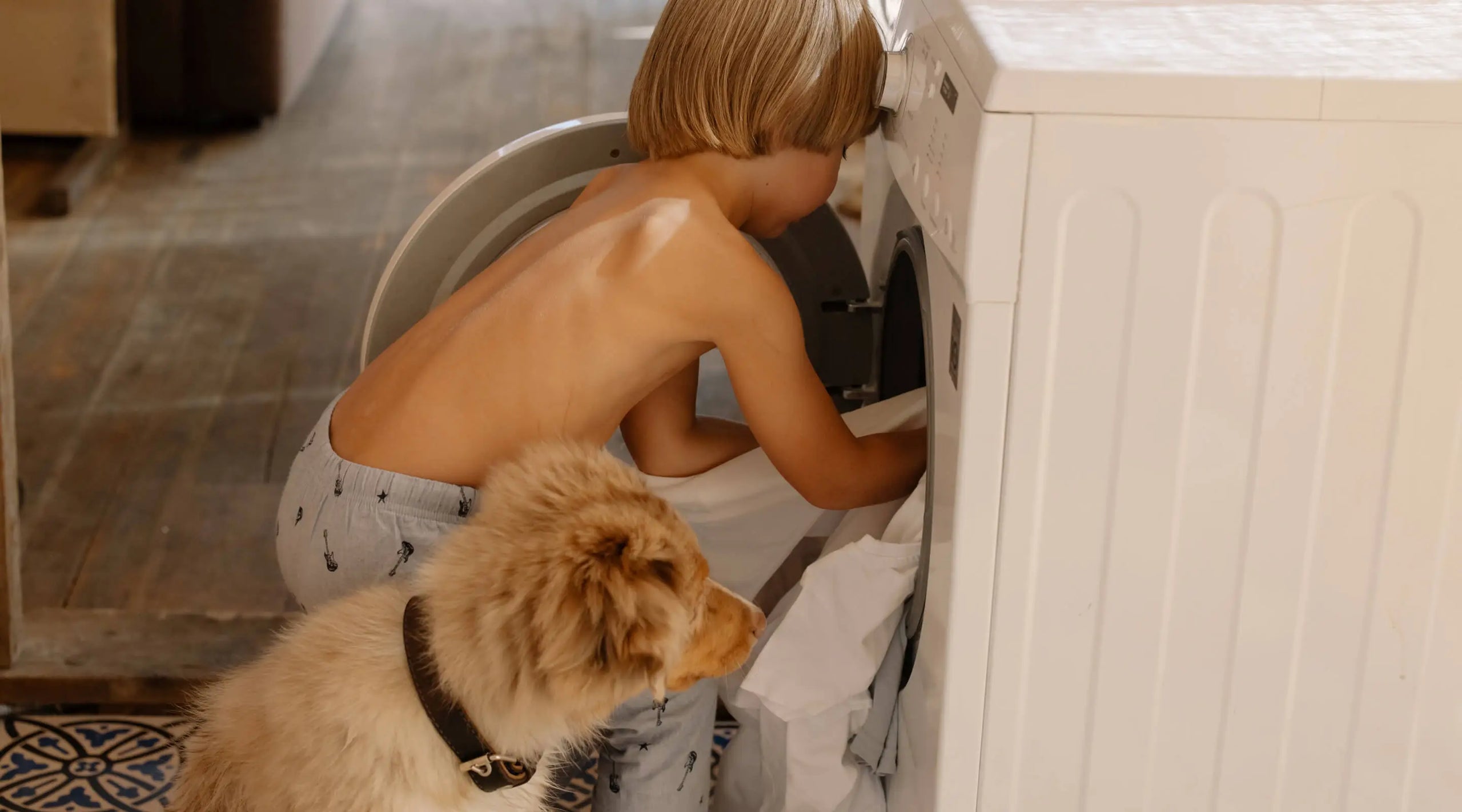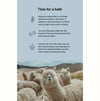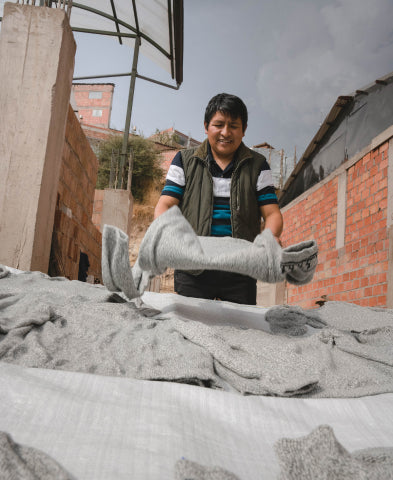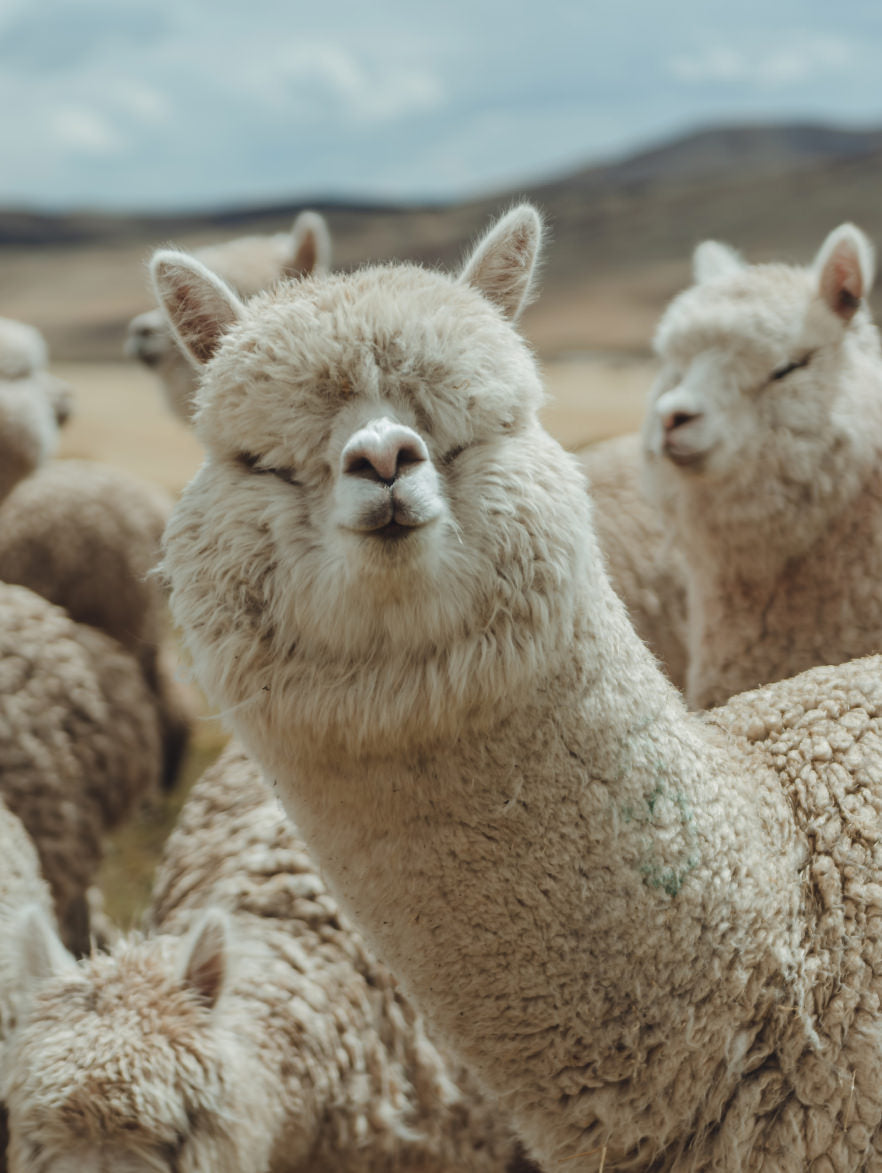



Taking care of our clothing has always been a simple, but tedious task. From a young age, we’re taught to separate whites from darks, turn clothes inside out, and check garment labels that provide explicit cleaning instructions. Whether or not you’ve adopted these methods of maintaining your clothes is mostly a matter of choice—some of us simply toss our dirty laundry in the washer and set the water temperature to cold before blasting it with high heat in the dryer. However, there are certain fabrics and garments that require a bit more love and care to ensure they hold up for years, and alpaca clothing just so happens to be one such special fabric. If taken proper care of over time, this unique fiber can last a lifetime.
So - how do you maintain alpaca fiber, and how should you wash it, dry it and store it to ensure it’s ready for every adventure? Read on for an in-depth guide that breaks the process down step by step, and keep reading for answers to some of the most common alpaca-related cleaning questions we receive here at Paka.




How To Wash Alpaca Wool
While heavily-soiled linens such as towels and bedsheets should be washed in warm or hot water, most of your other garments can be washed with cold water, and this includes alpaca apparel. Generally speaking, hot water has the ability to lift germs and bacteria from heavily-used fabrics, but it can also shrink, fade, and damage certain fibers over time. It’s also worth noting that modern detergents “have gotten much better at putting enzymes to work in removing dirt and stains at lower water temperatures,” so don’t feel pressured to use hot water simply because you were taught to do so growing up — cold water almost always does the trick.
Because alpaca fibers are highly odor-proof and antimicrobial, they require less wash cycles than most of your other clothing. For instance, you can wear Paka’s Everyday Baselayer countless times before it needs a wash because the fabric blend of alpaca and tencel is resilient and great at wicking moisture (for reference, this writer has worn his Paka baselayer shirt four times on the ski hill in recent weeks without washing it, or receiving a single funk-related complaint). But when the time does come to wash your alpaca apparel, you’ll want to follow these simple steps:





How To Dry Alpaca Wool
Caring For Alpaca Fibers Over Time
As we previously mentioned, alpaca is a strong, resilient fiber that doesn’t require a lot of upkeep. In fact, the fiber’s adaptability is what makes it so sustainable—less cleaning requires less resources, from water to energy. But just because alpaca is adaptable and hardy, that doesn’t mean you can neglect it entirely. To ensure your alpaca apparel lasts for years to come, we recommend folding it away between uses in a dark, dry space such as your dresser. Doing so will reduce exposure to bright sunlight and moisture, which should keep it soft and ready for any adventure, whether you’re hitting the ski hill or hiking distant peaks.




Does Alpaca Apparel Shrink When Washed?
Alpaca wool has a natural tendency to shrink when washed in hot water. However, the degree to which alpaca wool shrinks depends on the specific type of alpaca wool, the blend of fabrics used in conjunction with alpaca wool, its quality, and your preferred washing method.
To minimize the risk of shrinkage when washing alpaca wool, it’s important that you follow any and all care instructions provided by the manufacturer, or on the garment label. In general, we recommend hand washing alpaca wool in cool water with a mild detergent if you have the space and time to do so, but washing it in cold water on a delicate cycle will also do the trick. Avoid agitating or twisting the fabric during the washing process if you choose to do so by hand. After washing, gently squeeze out any excess water and reshape the garment to its original size before laying it flat to dry. Do not hang it to dry as the fabric’s weight will cause it to stretch and deform.




What Should I Do If I Stain My Alpaca Clothing?
If your alpaca clothing gets stained, here are some steps you can take to try to remove the stain should you not have the opportunity to visit a professional launderer.
Act Quick
The sooner you address the stain, the better your chances of removing it. Once a stain occurs, be sure to remove the garment and wet the stain as soon as possible.
Blot The Stain
Use a clean cloth or paper towel to blot up as much of the stain as possible. Avoid rubbing the stain, as this can spread it and force it deeper into the fibers.
Use A Gentle Cleaning Solution
Mix a small amount of mild detergent or baby shampoo with cool water. Dip a clean cloth into the solution and gently blot the stain. The detergents we listed above should suffice if you happen to have them on hand.
Rinse Thoroughly
Rinse the area with cool water to remove any soapy residue. Be gentle when rinsing the garment, and don’t rub it against other areas of fabric in an attempt to work the stain out.
Dry The Garment
Lay the garment flat on a clean towel to let the stained area dry. Avoid hanging or wringing out the garment, as this can stretch or damage the fibers.
If the stain doesn't come out with these steps, you may need to take your alpaca garment to a professional cleaner who has experience with natural fibers such as wool, cashmere, or alpaca. It's also important to note that some stains, such as oil, ink, or blood, may be difficult or impossible to remove completely.




How Can I Prevent Alpaca From Pilling?
Pilling is the formation of small, fuzzy balls of fiber on the surface of a garment—you’ve probably seen these little balls form on hand-me-down sweaters and old clothing that’s been worn for decades. It’s a common problem that can make your clothes and other fabrics look worn out, tattered, and old, even if you’ve rarely worn them. There are a few key methods you can adopt to prevent alpaca garments from pilling, all of which can be performed from the comfort of your home.
Choose High-Quality Fabrics
Look for fabrics made from long-staple fibers such as wool or alpaca. These fibers are less prone to pilling than shorter fibers. For instance, here at Paka, we use long-staple alpaca fibers in all our garments to greatly reduce the likelihood of pilling.
Review Care Instructions
Always follow the care instructions. Avoid washing clothes on high heat or using harsh detergents, as these can damage the fibers and cause pilling.
Wash Your Clothes Inside Out
Turning clothes inside out before washing can help to reduce friction between the fabric and the washing machine drum, which can cause pilling. It also reduces the likelihood that fabrics will rub against one another.
Avoid Mixing Fabrics
When washing clothes, avoid mixing fabrics that are prone to pilling. These fabrics can rub against each other and cause pilling.
Use A Fabric Shaver
If you do notice pilling on your clothes that requires more effort to remove than simply plucking the fuzzy balls free, use a fabric shaver to remove the pills. Be gentle and don't apply too much pressure, as this can damage the fabric.

Long Live Your Alpaca Apparel

Join the herd.
We grant our community private access to new products and exclusive offers.

